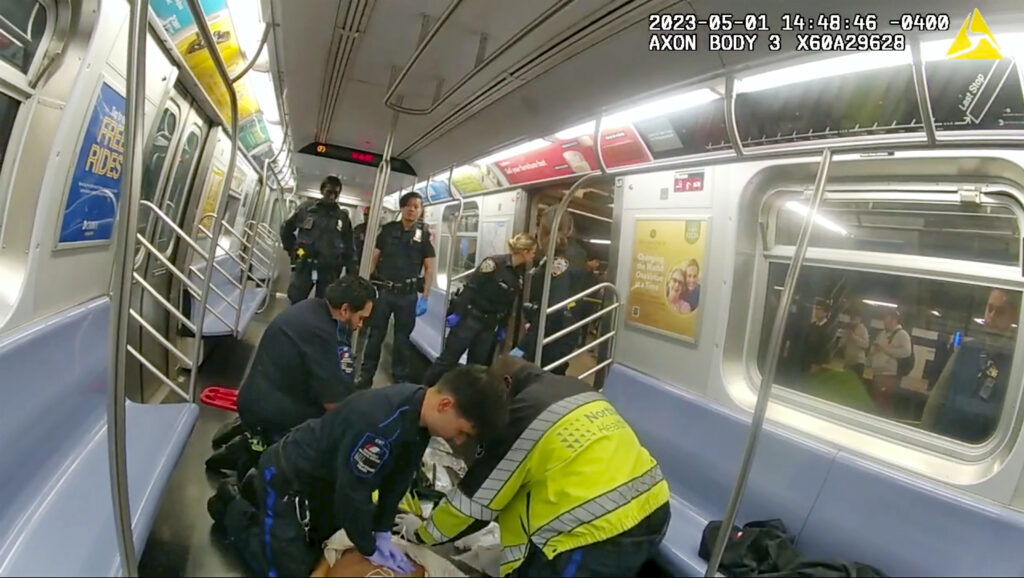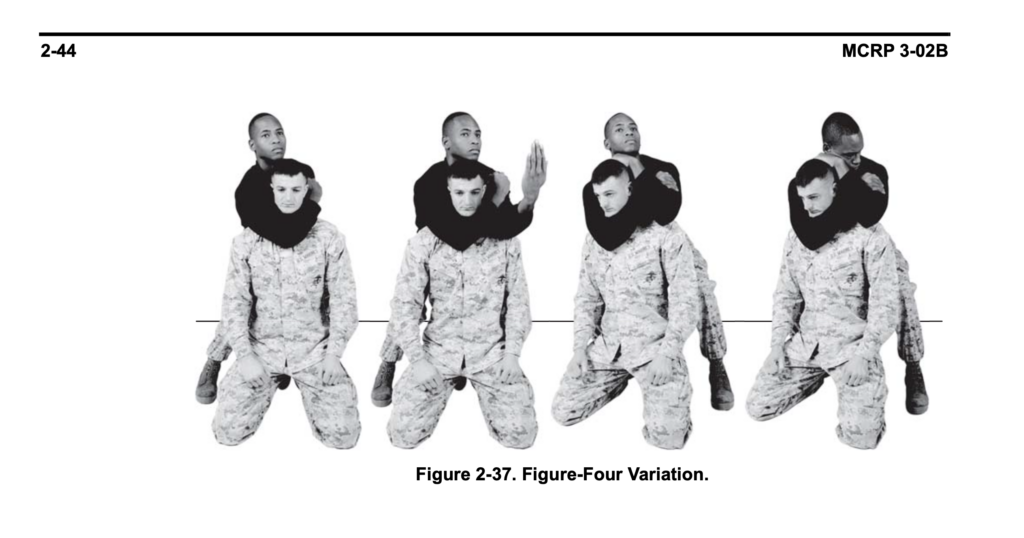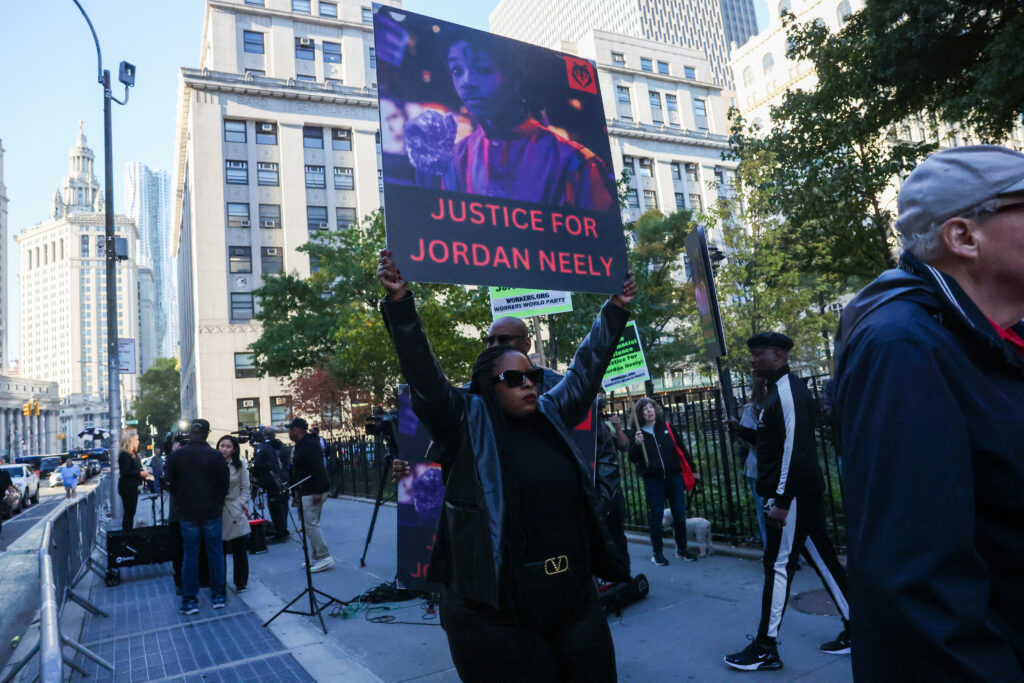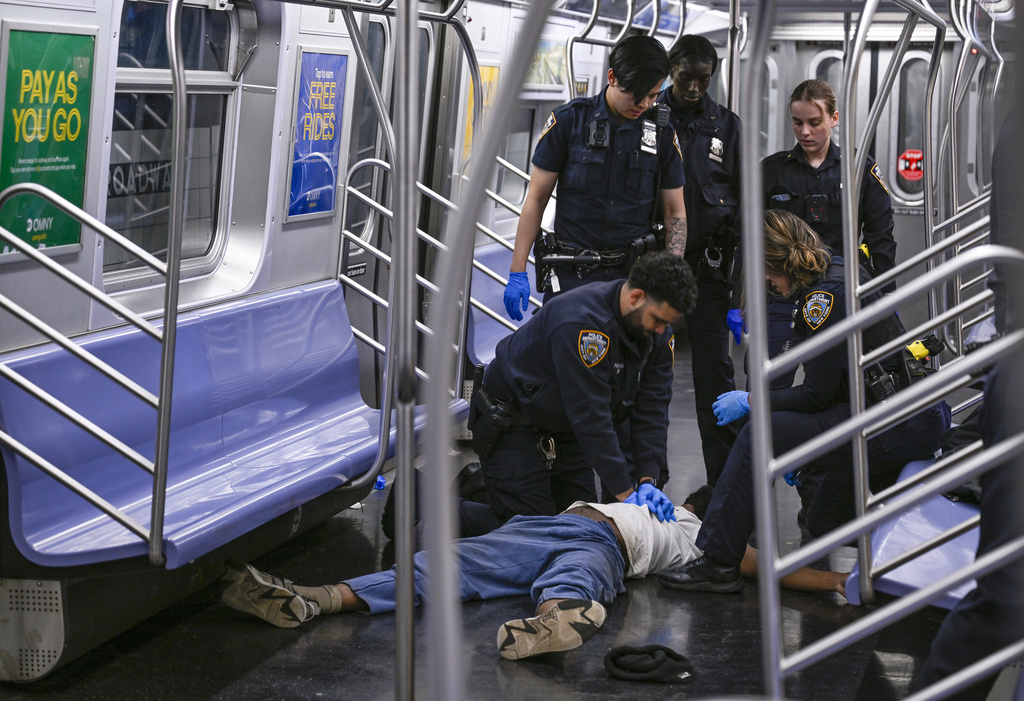‘Blood Chokes’ v. ‘Air Chokes’: Gruesome Testimony in Daniel Penny’s Trial Focuses on Marine’s Training in Deadly Martial Arts Maneuver
Also testifying was the medical examiner who says the chokehold killed Jordan Neely, something the defense disputes.

The trainer, who instructed Daniel Penny on the use of chokeholds during his service in the Marine corps, testified in the trial of the Marine veteran, who put the Michael Jackson impersonator Jordan Neely in a fatal chokehold on a New York subway last year. Though the trainer was the prosecution’s witness, his testimony may actually have helped the defense’s case.
On Thursday morning, the prosecution called Joseph Caballer, 30, a Marine veteran, who currently works as a bulk loader at a cement plant. Mr. Caballer has a black belt from the Marine Corps martial arts program (MCMAP), a combat system developed by the Marine Corps. It “complies techniques from various martial arts,” Mr. Caballer told assistant district attorney Dafna Yoran, who had called him to the witness stand to tell the jury how he trained Mr. Penny in the usage of chokeholds, while the two men served in the Marines.
Ms. Yoran is prosecuting the high-profile and racially charged case on behalf of the Manhattan district attorney, Alvin Bragg, who has charged Mr. Penny with second-degree manslaughter and criminal negligent homicide in the death of Neely. If convicted Mr. Penny faces a maximum sentence of 19 years in prison.
Prosecutors allege Mr. Penny acted recklessly when he put Neely, a street performer, known for his Michael Jackson impersonations all over New York City, including moon-walking on Times Square, in a fatal chokehold on a subway car’s floor last year. Prosecutors argue that Mr. Penny held the chokehold for about six minutes, and since he was trained in chokeholds, he should have known that holding Neely for that long could kill him.

Mr. Caballer testified that all Marines are required to complete the necessary training hours to reach at least a “tan belt,” the first of five levels, the highest being the black belt, and that Mr. Penny had reached the third level, the green belt. Mr. Caballer said all levels include being trained in various techniques of chokeholds.
The purpose, he further explained, of the chokehold is “to render an opponent unconscious,” adding, “you wanna release the pressure not to inflict a life threatening injury.”
“Can a choke turn lethal?” Ms. Yoran asked her witness, to which he replied, yes. The prosecution showed the jury images from the instruction manual the Marine Corps martial arts program provides, while Mr. Caballer explained the difference between “blood chokes” and “air chokes,” the former disrupting the blood flow to the brain and the latter disrupting a person’s breathing. The marines, the trainer said, are instructed to use different types of blood chokes.
“When teaching all these chokes, do you teach the dangers of holding them for too long?” Ms. Yoran asked. Mr. Caballer said he did, and that the Marines were taught not to keep a hold longer than five seconds.

Ms. Yoran played a video, which was recorded by one of the subway passengers, the high school student, Ivette Rosario, who testified last week. Mr. Yoran went through the footage in slow motion, frame by frame, asking the trainer to analyze the chokehold Mr. Penny was using on Neely.
Mr. Caballer noted that Mr. Penny’s elbow was not positioned correctly. “When you look at the elbow, it’s not centered on the body. It’s kind of on the side of the body.” The witness said, adding that Mr. Penny’s other hand was supposed to be behind Neely’s head, instead it was positioned on top of his head.
“Is this an improper blood choke?” Ms. Yoran asked and questioned, if it could potentially be cutting off the blood flow through the arteries? Mr. Caballer replied in the affirmative, implying that Mr. Penny may have killed Neely unintentionally by applying the chokehold in a wrong and thus deadly way.
But when the defense cross-examined the trainer, Mr. Penny’s attorney Steven Raiser asked, if it is “the position of the chokehold that renders someone unconscious or the pressure?”

“The pressure,” Mr. Caballer replied.
“So someone could stay in the position of the chokehold for longer than sixteen seconds and not apply pressure and not render them unconscious?” The defense argued, and the trainer agreed.
The defense played the video footage that was recorded by the freelance journalist Juan Alberto Vazquez, and asked the trainer if he could tell from the video if Mr. Penny was in fact applying pressure for about six minutes, or if he was releasing the pressure when Neely was calm, and tightening the hold when Neely struggled to break free.
“I don’t know exactly how much pressure he was applying,” Mr. Caballer answered, “I can’t definitely say.” He added that when Mr. Penny is seen in the video talking to the two other men, who helped him restrain Neely, he was possibly not applying the pressure that strongly.

“Penny is looking up and talking to other individuals,” Mr. Caballer testified. “He is possibly not applying a lot of pressure because he is not as focused on Mr. Neely… I can’t tell what kind of pressure he is applying.”
Neely’s father, Andrew Zachery, was sitting the pews during much of the testimony, bent over, holding his head in his hands. Eventually he got up and left.
Prosecutors called Detective Brian McCarthy, and played the police interrogation video, where he and his colleague questioned Mr. Penny shortly after the incident had unfolded as the Sun reported.
Mr. Penny told the detectives that he released the hold when other passengers confirmed that the two other men, who were helping Mr. Penny, restrain Neely, had the situation under control. But the video footage recorded during the struggle appears to show that Mr. Penny kept the hold despite the assistance. One of the men, Eric Gonzalez, testified on Tuesday that he told Mr. Penny to let Neely go but that the Marine veteran did not listen to him.

During interview, Mr. Penny was seen laughing with the detectives, one of whom had also served in the Marines. Detective McCarthy testified that Mr. Penny did not know during his interrogation that Neely had died.
As their last witness, the prosecution called the medical examiner, who ruled Neely’s death a homicide and determined he died from “compression of the neck,” noting “chokehold” in parentheses, as she testified, on the death certificate.
Dr. Cynthia Harris works for the chief medical examiner’s office, an independent agency, separate from the NYPD and the district attorney, which belongs to the department of health.
Ms. Harris conducted Neely’s autopsy. She told the jury that the street performer was 6 feet and one inch tall and weighed 165 pounds. Interestingly, Mr. Penny is the same height, and weighs just 5 pounds more. Ms. Harris said Neely had suffered blunt force trauma to his face, neck, torso and arms. She found scrapes and bruises, and small pools of blood from ruptured vessels in his eyes. Internally, she said, he had suffered hemorrhaging, and that he was in a “sickling state”, due to his condition of sickle cell anemia, a genetic blood disorder that predominantly affects people of color, though white people can also have it.

According to Ms. Harris, Neely fell unconscious because the blood flow to his brain was being suppressed by the chokehold. She did not finish her testimony on Thursday. The prosecution will resume questioning her on Friday. The defense will get their chance to cross-examine her.
In his opening remarks, defense attorney Mr. Kenniff had argued that “Jordan Neely did not die of asphyxiation, because the evidence will show that Danny did not apply continuous pressure to Mr. Neely’s neck for a length of time sufficient to cause death.”
Instead, the defense intends to show that “the evidence will point to cardiac arrest likely induced by the drugs in his system, the excitement of this struggle and the sickling of his red blood cells caused by a genetic trait evidenced in his autopsy.”
After the prosecution rests its case tomorrow, the defense will call one expert as a witness, and possibly Mr. Penny.

“In the self-defense cases, the defendants usually take the stand,” defense attorney, journalist and former host on Law and Crime News and Court TV, Michel Bryant, who has been attending the trial, told the Sun on Thursday.
Mr. Bryant, who now co-hosts the podcast “Justice Served”, together with trial attorney Linda Kenney Baden, contemplated that the jury could possibly find Mr. Penny guilty of the negligent homicide charge, which carries a maximum sentence of four years in prison.
“I think when you have a divisive case like this, it’s not unusual for the jury to compromise for the lesser charge, in this case criminal negligent homicide. It satisfies some people, who feel like something should be done. And for a first time offender, Mr. Penny could get off with probation.” Mr. Bryant told the Sun.

